_We may earn revenue from the products available on this page and participate in affiliate programs. Learn more ›
_
There’s no indication that Shakespeare’s Juliet was into bass fishing, but her famous line: “A rose by any other name, would smell as sweet,” applies perfectly to one of the sport’s hottest and most efficient rigs—the jighead minnow.
You may know it by another name, but whatever moniker you use, it’s about as basic a rig as you’ll find—just a light jighead with a baitfish-style body. Don’t let the simplicity fool you, though. This rig is a problem solver and a bite-getter—and a weapon you need to have in your bass fishing arsenal. Below is a full breakdown of what it is, why it works, proper rigging, and how to start hammering bass with it.
First, the name thing.
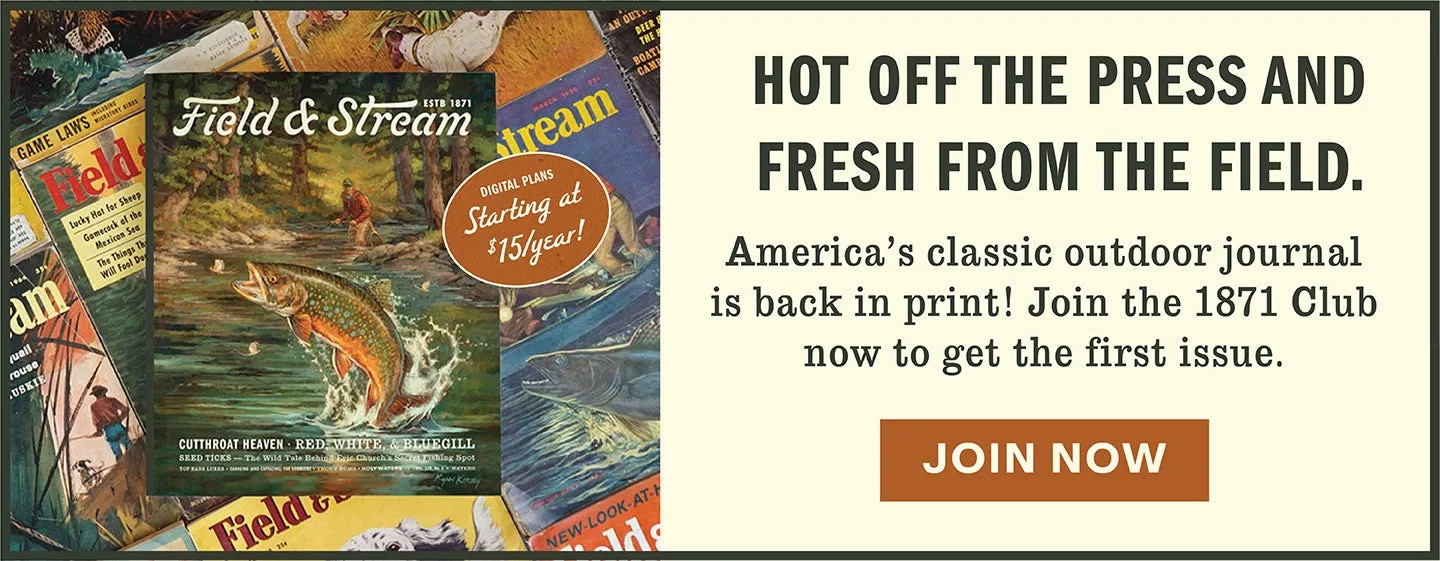
Learn how to get the all-new Field & Stream journal!
Etymology and Evolution of the Jighead Minnow
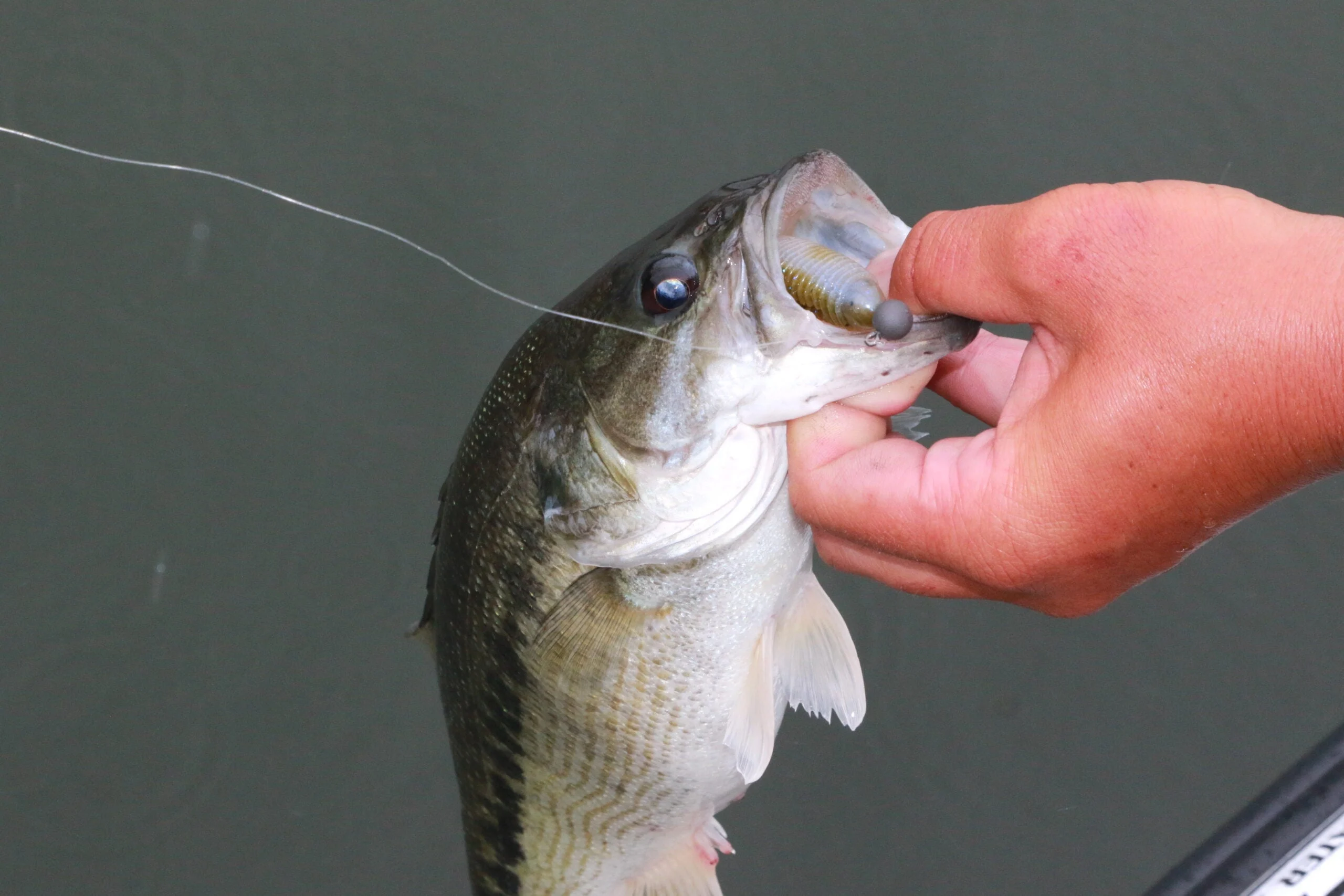
What started as a smallmouth and walleye technique is now use for largemouths, smallies, and spotted bass too. Cody Huff
For more than two decades, northern smallmouth anglers have used the term “moping” to describe a static vertical presentation with a jighead and a minnow body. That same basic technique reached mainstream bass fishing awareness during the 2017 Bassmaster Elite tournament at Tennessee’s Cherokee Lake, when the previously guarded local secret of using this rig came to light.
At that point, the bass world adopted the name “Damiki Rig” for the jighead minnow, as the Damiki Armor Shad
was the primary bait choice at the time. Since then, the fishing market has exploded with options from the Doomsday Tackle C-Shad (modeled after a photo of a threadfin shad), to the YUM Sonar Minnow
that produced half of Jason Christie’s
fish during his 2022 Bassmaster Classic win at Lake Hartwell.
Colloquially, the phrase “dropping on ‘em” still circulates, especially on those East Tennessee waters from which the southern application of the northern tactic spawned. All of these monikers refer to the same thing: a user-friendly technique for holding a baitfish profile above suspended bass, or above the bottom structure to bass relate.
Initially, using a jighead minnow was mostly a cold-weather technique, but the application now spans nearly all-year, with the exception of the spawn. Moreover, anglers have taken what originated as a smallmouth and walleye technique and expanded its relevance with nationwide application to include largemouth and spotted bass.
**Related: Summer Bass Fishing: A Complete Guide
**
Why the Jighead Minnow Works
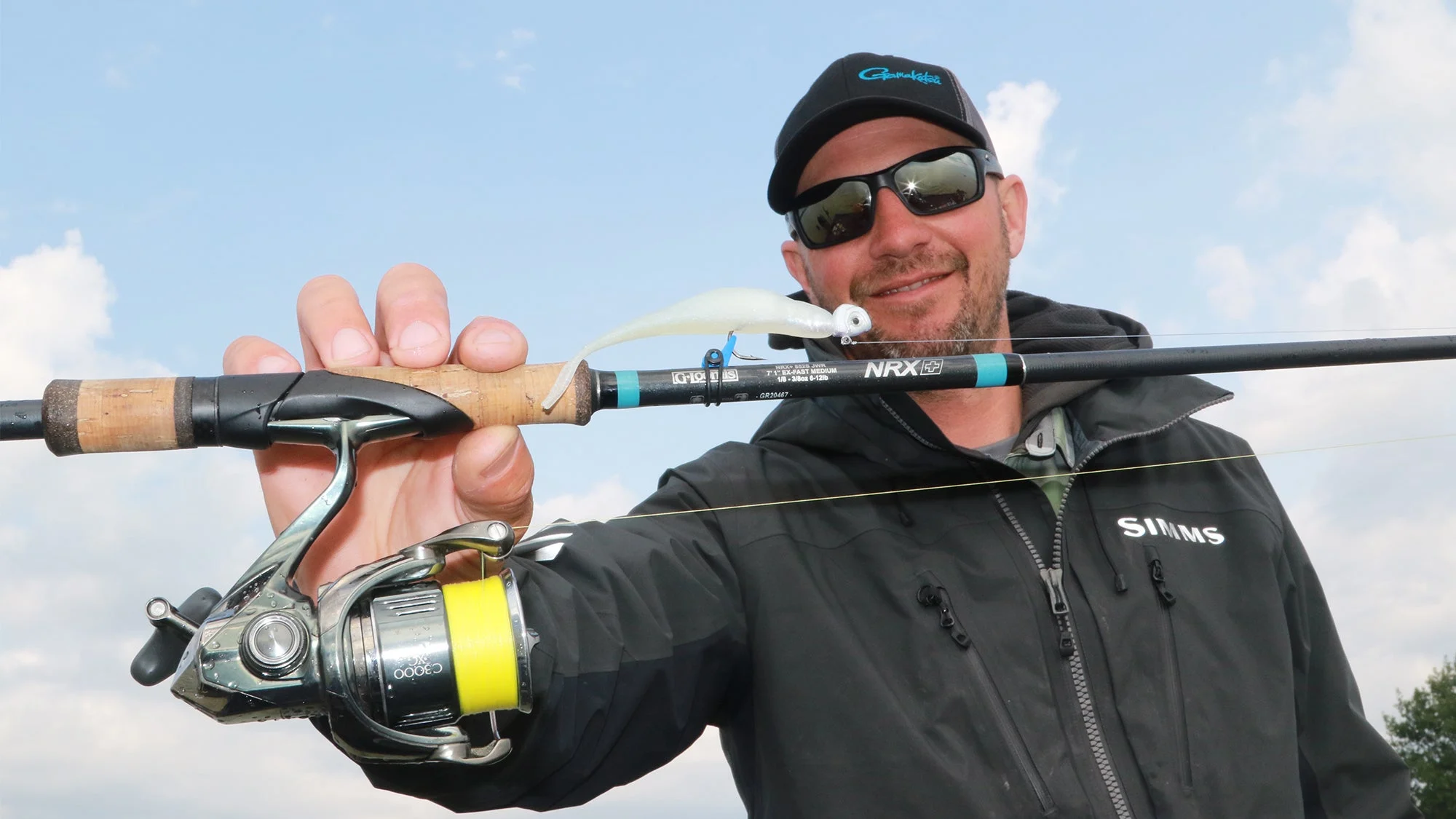
Elite Series pro Jeff Gustafson used a jighead minnow to win the 2023 Classic. Jeff Gustafson
Canadian pro and Bassmaster Elite veteran Jeff Gustafson
has played a significant role in popularizing this technique by “moping” his way to victory at the 2021 Bassmaster Elite at Fort Loudoun-Tellico Lakes (at the top of the Tennessee River chain) and then winning the 2023 Bassmaster Classic on the same area of the same fishery, using the same presentation.
Gustafson fished the canal linking Fort Loudoun and Tellico Lakes, and when he found big smallies suspended over hard bottom, the jighead minnow ruse proved irresistible. “Essentially, we all thought of technique as walleye fishing for bass in the early years, because it was offshore and vertical,” he said. “The reason it’s so effective is simply because bass, walleye, and all sport fish eat minnows, and I think there’s probably no better imitator than that presentation.”
How to Rig a Jighead Minnow
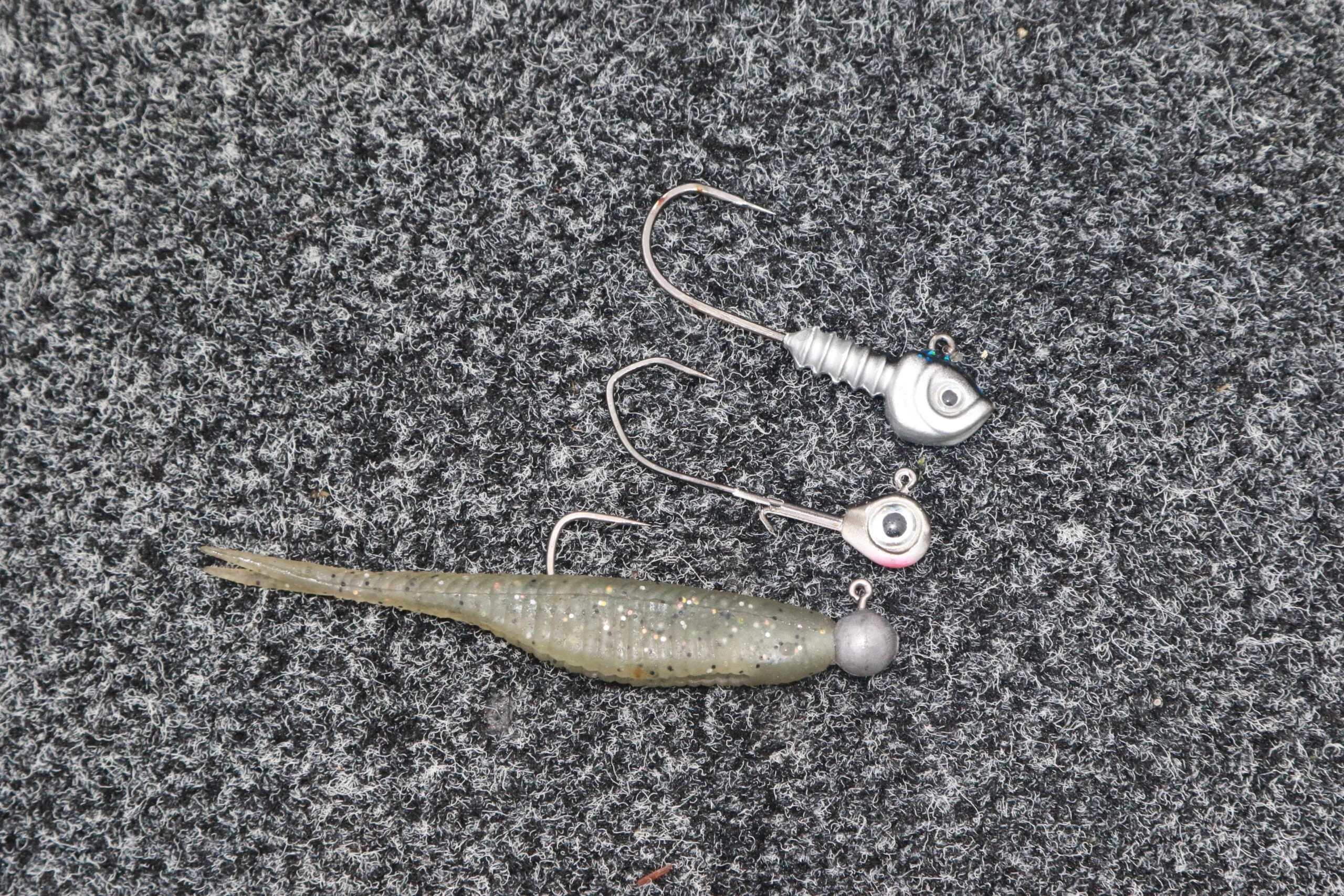
You can use a variety of jigheads for this rig, including, from top: A Northland Smeltinator jig, a VMC Sleek jig, or a plain, unpainted ball-head jig. David A. Brown
While a plain, unpainted ball-head jig
works well, some believe a white or chartreuse paint job helps sell the look. Lead heads get plenty of bites, but tungsten’s density allows you to use smaller heads in the chosen weight. Gustafson steps up the realism by rigging his Z-Man Scented Jerk ShadZ
on a Northland Smeltinator jig
, which features molded gills and lifelike eyes. This jighead includes a prominent bait collar, but he adds a dab of Loctite adhesive to keep the bait in place.
Most anglers use a 3- to 3 1/2-inch split-tail or straight-tail bait, but Gustafson’s fellow Bassmaster Elite pro Cody Huff often upsizes his rig by pairing a 1/8- to 1/2-ounce VMC Sleek Jig
with a 5-inch soft jerkbait to match larger indigenous forage. As he explains, it’s also a triggering strategy: “I’ll do that to entice the biggest fish in the school,” Huff said.
The Right Tackle for Fishing a Jighead Minnow
Although this is technically a finesse presentation, Gustafson said it’s important to complement a flexible rod tip with sufficient fish-whipping backbone. His choice is a 7′ 4″ medium G. Loomis NRX spinning rod
with a 3000-size Shimano Stella reel
carrying 10-pound Power Pro braided main line with a 10-pound Shimano Mastiff leader.
Line watching’s a big part of this technique, so Gustafson likes high-vis yellow. With a couple feet of fluoro leader, the braid’s unlikely to spook any fish, but it saves him the eye strain of trying to spot less noticeable line. “During the day, you may get a bite when your bait is falling, so you’ll see your line jump,” Gustafson said. “Also, if you ever hit bottom, you can see that and you know you have to raise your bait.”
How to Catch Bass with a Jighead Minnow
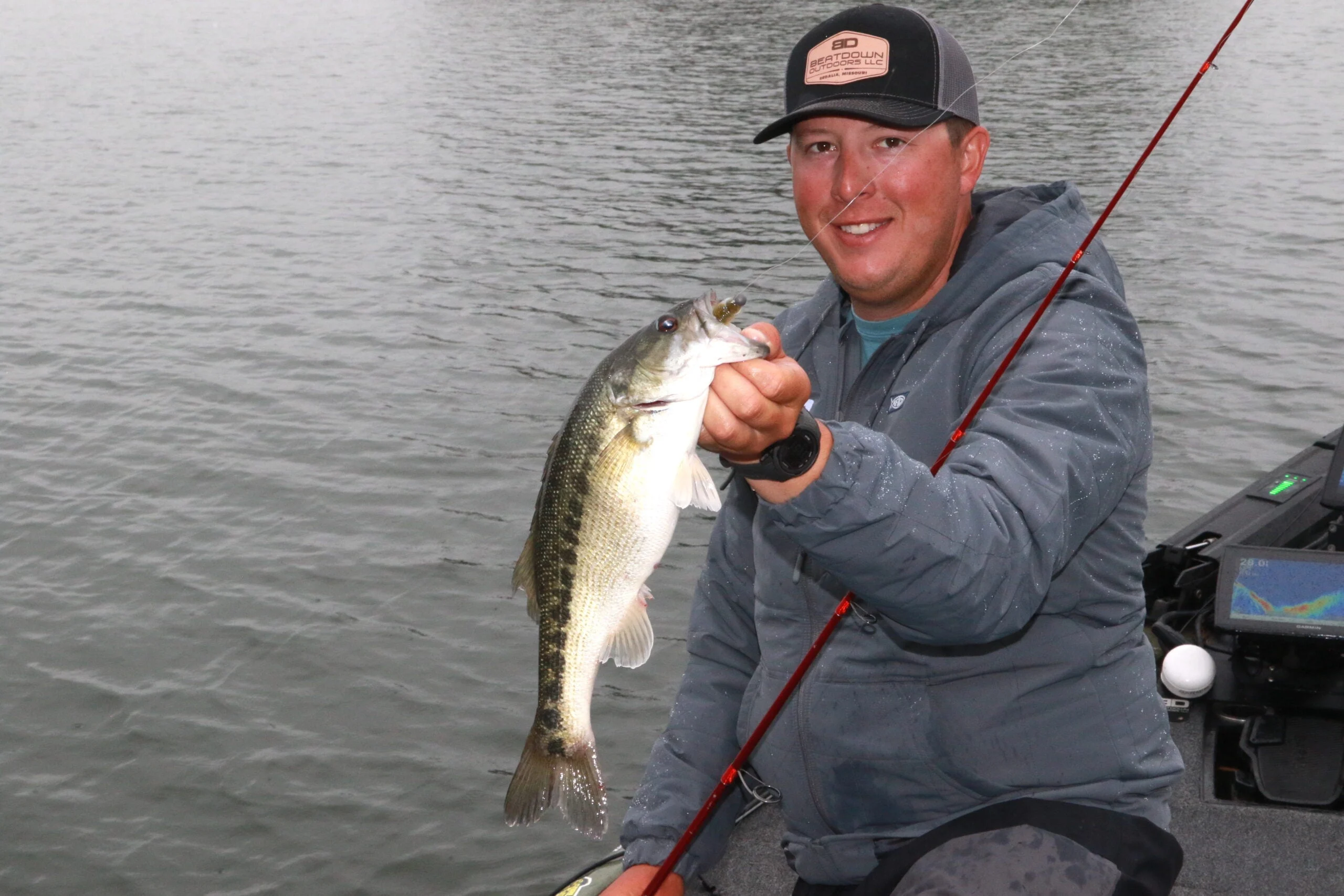
Pro angler Cody Huff shows off a bass caught on a jighead minnow. Cody Huff
A stickler for precise presentations, Gustafson adds this tip: “Keep your knot perfectly centered on the jig’s line tie. The key to this technique is keeping your bait perfectly horizontal, because that’s how baitfish look in the water,” he said. “Sometimes, after you catch a fish, or if you miss a bite, your knot can slide forward or backward on the line tie. When that happens, the bait will hang at an angle and that’s not a natural look. One of the real triggering elements of this presentation is the bait hanging in a horizontal posture and doing nothing.”
Huff agrees and points out a strategic detail—proximity. “You want to watch your sonar and keep the bait above the fish’s head,” he said. “The farther they have to come up, the more aggressive they are.”
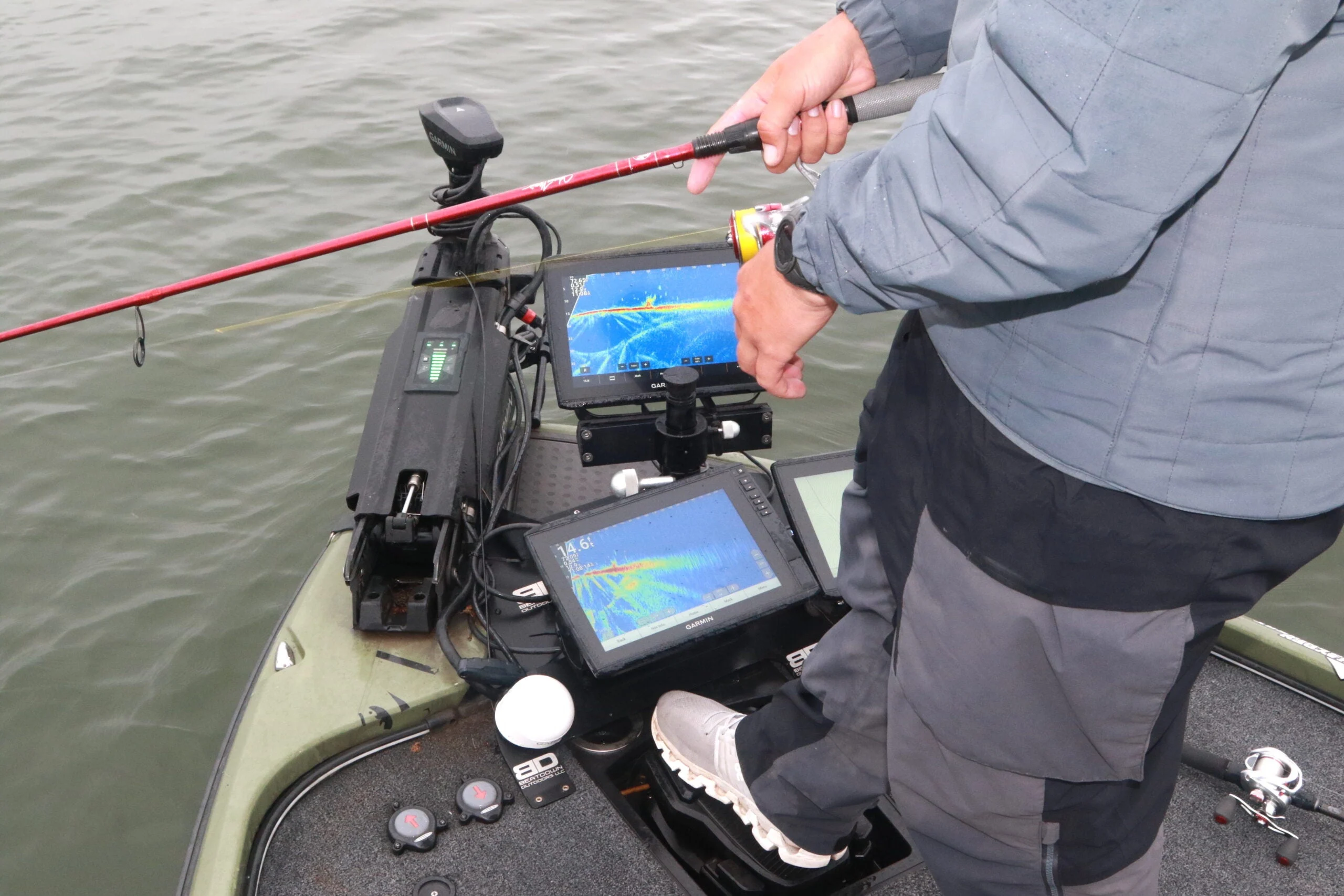
Using your electronics to locate fish is a big part of this technique. David A. Brown
Gustafson adds this: “If you can see the fish on your electronics, you may be tempted to try to put the bait right in front of them. But if you drop it right in their face, you can spook them. They know something’s up. The more you can make them swim for it, the more likely they are to eat it. In dirtier water, you may have to get closer, but bass, especially smallmouths, can see it from farther than you’d think.”
While a vertical presentation is the go-to technique when fishing a jighead minnow, Gustafson’s Classic win showcased the rig’s versatility, as he caught several of his fish by pitching to them. When pressured bass in clear water won’t tolerate a boat sitting directly over them, Gustafson relies on his forward-facing sonar to guide his short pitches. He casts past the fish and lets the bait pendulum across their radar, but as with those vertical drops, you have to keep the bait above their heads. “Once you get their attention, it’s kind of a cat-and-mouse game,” Huff adds. “Keep the bait just far enough ahead and keep it moving to talk them into biting.”
**Read Next: Best Summer Bass Baits, Picked by the Pros
**

